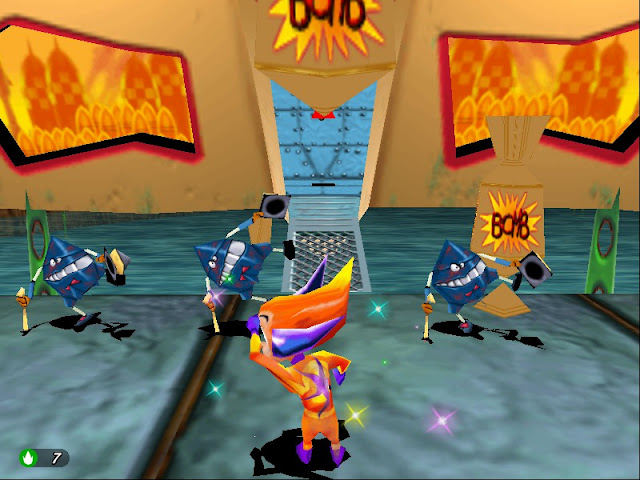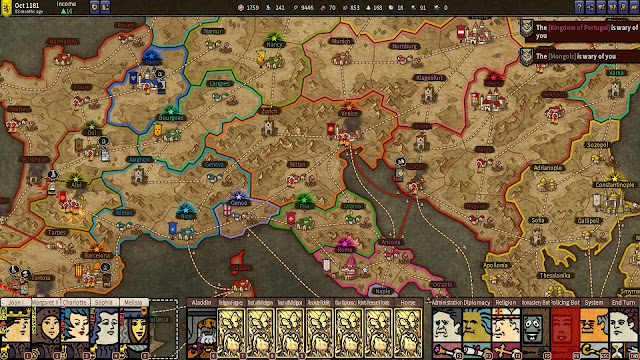Bug Fables Review | An excellent clone of Paper Mario
A movement I support is the recent trend of some indie developers to create games loosely based on popular retro titles.
I like it because, if done well, they can be elevated to the status of sequel that we never got, especially if a particular game doesn't get released in a while, these loosely based games can fill a void both for old fans and for people that have never played the original title.
Bug Fables does exactly this and, while I've never played a Paper Mario title despite I recognize the influence, manages to be a unique and enthralling experience.
Aesthetics

|
A moment of respite before starting the adventure
|
The graphics are well curated, with a mix between bi-dimensional images and three-dimensional structures, with the sprites having a cutout effect that gets emphasized when they turn or move around. Coupling that with a colorful and vibrant art style, the game gets an atypical look, it reminds me of a theater style that uses only silhouettes.
The animations are simple, but very expressive, with few frames they manage to transmit emotions in a clear and convincing way.
There isn't any dubbing, all the "spoken" text gets expressed through synthesized sound effects. Despite that, the developers have made sure that there would be some variety, as a matter of fact, the characters can emit some kind of sounds that can be higher, lower pitched or soft.
The soundtrack is of good quality, the tracks are nice to hear and some are even themed, exclusive to some specific situations.
The sounds used are functional, they are pleasant, simple and manage to convey information in a clear way.
Game Mechanics

|
The character in front will do more damage, but will also
be attacked more
|
The game can be considered a role playing game purely focalized on fighting and exploring, with the fights being turn based and moving on when all the characters of a group have done an action.
During clashes, it is possible to make one of five actions: basic attack, abilities, strategies, turn relay and use object. Basic attack is simple, you do only damage, while abilities are more varied, some do damage to one or more enemies, others heal the group members or protect them. Use object makes you use a consumable from the inventory. Turn relay is an interesting action, it makes a character that has already acted, act again in the same turn by relaying the turn of another character that hasn't acted yet. Be aware to not abuse it, the character that is receiving the extra turn will be tired and as such it will do less damage. Strategies have diverse actions with different ends such as spy, it's really useful because it shows the life bar of the enemies and their description. Doing a basic attack, an ability or the spy action, will show a quick time event that, if failed, it will not do the maximum damage, in the case of spy it will just fail.
All of this makes the fights fun and engaging, even after many hours of playing.
There are four statistics that affect the fights: hit points, team points, experience points(in the game called exploration points) and medal points. Team points are shared between all members of the group, and once they ran out it's impossible to do any other ability. Medal points represent how many medals the group can equip. When you level up, it is possible to increase either the hit points, team points or medal points and, in my experience, it is better to increase solely the medal points since it is possible to equip medals that increase the hit points and the team points. Indeed, the medals are very useful since they concede several bonuses and sometimes unique abilities.
At the start of the adventure it's possible to retrieve in the explorers guild a medal that increases the difficulty of the game. Besides the extra challenge, defeating the bosses with this medal equipped it will grant the player extra medals, to pick up always at the guild. If you don't want to fight the bosses at a higher difficulty, it's possible to buy all the not gained medals from merchants spread across the game.
Besides combat, exploration is another focal point of the game, wandering is encouraged by the number of findable secrets during the adventure. Exploring beyond the obligatory path you find everything and more, including some secondary missions. During the adventure the main characters gain special moves that expand their travelling capacities, these moves are useful especially because there are many areas, even at the start, that become reachable only after acquiring the aforementioned moves.
If you're not a fan of backtracking to find objects that you have missed, exploration may be an aspect you're not going to like.
Cooking is a little nice mechanic, there are some chefs spread in the various settlements that can cook you a dish with one or two ingredients. It's fun to find the recipes mixing objects apparently incompatible and it's useful too since some meals grant the mixed effects of both base ingredients, allowing you to save space in the inventory and time during fights.
There are also several mini-games spread in the world, the more developed one is a card game. Without spoiling much, all you need to know is that to gain new cards you must spy the enemies.
The economy is overall well balanced with affordable prices. The main currency used are berries gained by cutting the grass, defeating enemies or completing secondary missions, keep in mind that there is a limit of 999 carryable berries, after that other ones will not be gathered, but there is a bank where you can deposit the excess money. Stay calm, the cashier won't run away with your deposit to spend it in a hot spring. There is also secondary currency, made of crystal berries, usable in a secret shop that sells unique medals.
Playing with the difficulty medal equipped all time and completing 90% of secondary activities, I've finished the game in 52 hours.
Narrative

|
It's possible to read a lore book, if found and brought back to
the royal library
|
The general setting is focused on the kingdom of Bugaria, a country where the queen has issued a royal act to the finding of the Everlasting Sapling, a plant capable of granting eternal life. For this, the explorers guild has organized several search groups to fulfill her majesty's wishes, but none of them has succeeded yet.
The premise is good and in the course of the adventure it gets explored fully, with the various rising questions receiving answers in due time.
The main story focuses on the group composed by Kabbu, Vi and Leif. The three will go around the world searching for the sapling and along the road they will meet many characters. Also, the group will receive dedicated missions to explore theirs backstories and go deeper on who they really are.
The primary and secondary characters are well characterized with each one having their own recognizable personality, you'll hardly get confused on who is who.
The game is full of legends and mythos, emphasized by the various background objects. Mysteries abound on what happened to previous civilizations and where have they gone.
Particularly, you are going to see a lot of familiar objects scattered around the game world, what remains of the forgotten "giants".
Recommendation:
Bug Fables is a pleasant experience and easily recommendable to anyone seeking a fun, deep and charming title.




Comments
Post a Comment